Middle Fork Hiking Trail - Overview Info
The Middle Fork of the Salmon Trail parallels the river from Boundary Creek (RM 0) to the Big Creek Bridge (RM 77.8). Side canyon trails join the main system in many spots, and at times there are trails on both sides of the Middle Fork. Miles indicated in the title and throughout the text use river miles (RM). Though the trail covers more linear distance, the best map labels mileage in reference to floating the river corridor.
These descriptions are from a raft-supported Middle Fork hiking trip and are intended to provide a description of a typical day along the entire length of the Middle Fork Trail. While this trip is easily accomplished with raft support, backpackers will be carrying considerably more weight and will have to come up with a different plan for egress from the canyon. One option would be to charter a flight out of the canyon from the Flying B Ranch (RM 66.5). Alternately, one can hike out through either Big Creek (river left) or the Big Horn Crags (river right) once the trail leaves the Middle Fork at the Big Creek Bridge (RM 77.8).
In addition, backpackers will have more flexibility with their campsite selection and itinerary as they are not assigned specific campsites along the river. For more information about permits and wilderness regulations visit the Middle Fork Ranger District website.
For more general information about rafting the Middle Fork of the Salmon, read this informative Middle Fork overview.
To avoid redundancy, these hiking descriptions focus on the particulars about the trail/hiking experience. Additional Outdoor Project adventures covering each day of a six-day Middle Fork float that include a detailed landscape description can be found here:
Middle Fork of the Salmon River – Day 1 - Boundary Creek Launch (RM 0) to Sheepeater Camp (RM 13.3)
Middle Fork of the Salmon River – Day 2 - Sheepeater Camp (RM 13) to Marble Creek Camp (RM 32.4)
Middle Fork of the Salmon River – Day 3 - Marble Creek Camp (RM 32.4) to Shelf Camp (RM 48.9)
Middle Fork of the Salmon River – Day 4 - Shelf Camp (RM 48.9) to Driftwood Camp (RM 71.6)
Middle Fork of the Salmon River – Day 5 - Driftwood Camp (RM 71.6) to Otter Bar Camp (RM 90.5)
Day 6 - Trail Camp (RM 64.4) to Haystack Rapid (RM 67.8)
On the last day of the trek down the Middle Fork the trail enters the lower canyon. Below Haystack Rapid it crosses miles of steep and rugged terrain. Though the path is well maintained and easy to follow, the constant walking over rocky and uneven landscape begins to wear on your lower limbs. By the time you reach Big Creek, you will most likely be happy to rip off your shoes and get in the boats.
From Trail Camp the river traverses about a mile of steep and consistent canyon wall to Warm Springs Creek (RM 65.6). On the other side of the creek is the historical Mormon Ranch Cabin. In the late 1800s this site was on the main trail between Thuner Mountain and the Yellowjacket Mine. Perry Beagle and his brother were farming the bench in 1902 and ran a ferry for miners heading to Thunder Mountain. Perry came out west in search of gold in California. Following the rushes north he mined along the Rogue River and participated in the Indian Wars there before coming to Idaho. Several other canyon residents used the bench before Fish and Game bought out the last owner. Landslides in 1997 clogged the irrigation ditch, and the fires in 2000 burned the bench and drainage behind the cabins.
For the next 2 miles the trail crosses the open and expansive landscape across from the Flying B Ranch. In the spring these slopes can be lush and green with highlights of colorful wildflowers. In the fall it is best to cross the monotonous brown landscape in the cooler hours of morning. A side trip across the river (via a bridge) to the Flying B Ranch for an ice cream cone can break up the stretch. Pole Creek (RM 67.8) incises into the large alluvial fan that pushes into Haystack Rapid. Once you climb out of the narrow v-shaped crossing, turn hard left and head to the river if you want to take a look down on to Haystack and Bernard Rapids.
Haystack Rapid (RM 67.8) to Driftwood Camp (RM 71.4)
Once you leave the relative flat expanse of the Pole Creek fan, the trail won’t encounter another significant alluvial fill terrace until shortly before Rattlesnake Cave. The relative lack of these terraces, quite common in the middle reaches of the river, indicates the steep and rugged nature of the lower canyons of the Middle Fork.
The Bernard Creek guard station and airstrip can bee seen across the river as hikers make progress down canyon. Short Creek Camp (RM 68.6) is on the trail opposite the downstream end of the airstrip. While relatively flat, the trail below Short Creek Camp crosses lots of open talus slopes. As it makes a right turn below the towering Johnson Point the trail climbs high up the canyon wall through a series of ledges with great views onto the river below. A small alcove with some faint Indian pictographs is passed on the descent from the high point at the start of Jack Creek Canyon.
For the next mile the river (and trail) follows a broad turn to the left through Jack Creek Canyon. There are two significant rapids, Earthquake Rock and Jack Creek, as well as several big crashing wave trains between the two. If you are lucky, a rafting party will run the rapids as you traverse the rocky and rugged trail through this stunning canyon. The trail drops to river level when crossing Jack Creek. Just downstream, high water laps at retaining walls that prevent the trail from washing away in spring floods. From here it is almost another a mile up and over a high grassy shoulder and down through a few switchback to Driftwood Camp.
Driftwood Camp (RM 71.4) to Rattlesnake Cave (RM 74.2)
The large sandbar nestled among several huge porphoritic boulders is an ideal place to re-convene with rafts and plan a lunch stop. From the camp the trail climbs back to its now customary position about 50 feet above the water. The perspective of the canyon from this height is pretty from nearly every point on the trail. Wilson Creek (RM 72.5) offers a rush of cold air descending from high in the Big Horn Crags to the east. After crossing the bridge, a spur trail leads down to a beautiful gravel bar at the river's edge for a bit of riverside meditation.
Another mile of traversing the steep canyon wall leads to a rocky overlook (RM 73.5) looking upstream. Across the river is a huge ponderosa tree undercut by extensive digging into what looks like surprisingly soft sediment. Rocky Mountain Big Horn Sheep chew at these ancient lake sediments that were deposited in the stillwater behind a massive landslide dam nearly 12,000 years ago. Both ewes and rams need the calcium rich sediment to grow horns as well as produce milk for their young.
Just around the corner the trail climbs onto and crosses the last broad fill terrace in the canyon. As the trail re-enters sparse trees, look for a spur trail leading down to the overhang of Rattlesnake Cave.
Rattlesnake Cave (RM 74.2) to Big Creek Bridge (RM 77.8)
Rattlesnake Cave is a natural overhang protected by a thick wall of riverbank trees and willows. There are some impressive pictographs here because this was once a bivvy shelter for small Native American hunting parties. For hikers who don’t want to tackle the steep climb above Rattlesnake, this is an easy point to load onto the rafts.
Once back on the main trail, climb up the south side of Rattlesnake Creek for about 200 feet. At this point the trail crosses the creek and climbs through a series of switchbacks to gain another 200 feet, where it tops out at a broad saddle. Enjoy the view from here, or scramble west down the ridge for a slightly better perspective onto the river as it snakes between Survey (RM 74.4) and Wollard Camps (RM 74.5).
A long and gentle descent across rolling grassy hills for three-quarters of a mile takes hikers back near the river and underneath a few small cliffs that display some more pictographs. Pause for a stunning view back up canyon at a rocky buttress shortly beyond the pictographs. This point marks the beginning of the final 3-mile rugged and beautiful traverse along the base right canyon wall to the Big Creek Pack Bridge.
Once the trail passes over the top of Waterfall Creek Rapid (RM 77.4), it just a short jaunt to the crossing of Waterfall Creek (RM 77.6). Depending on the season, this impressive cascade thunders loudly as it drops to the river below. Hikers will get drenched if they stay too long on the bridge. Within sight downstream is the Big Creek Pack Bridge (RM 77.8), which crosses the river and marks the end of the hike.
The easiest place to meet boats is across the bridge at the small confluence campsite. Float-assisted hikers can take off their shoes and pop open a cold drink. At this juncture, backpackers are faced with several more days of steep and rugged hiking to climb out of the Middle Fork Canyon into the Big Horn Crags (to the east) or up Big Creek and then along the rim of the canyon to the Stoddard Pack Bridge on the Main Salmon (to west and north). Either way, the Big Creek Bridge marks the end of a stunning trek through the varied landscape along the Middle Fork of the Salmon River.
Previous Day – Middle Fork of the Salmon Trail – Day 5
Reference: Content partially excerpted from The Middle Fork of the Salmon River – A Comprehensive Guide by Idaho River Publications.
Logistics + Planning
Preferable season(s)
Congestion
Parking Pass
Pros
Cons
Trailhead Elevation
Features
Suitable for
Location
Nearby Adventures
Nearby Lodging + Camping
Our mission is to inspire adventure with beautiful, comprehensive and waterproof map-based guidebooks. Owner, publisher, and photographer Matt Leidecker, grew up exploring and guiding on the rivers in central Idaho. His award winning Middle Fork of the Salmon River – A Comprehensive Guide is the standard by which other river guidebooks are measured. Printed on virtually indestructible YUPO paper, IRP guides are truly unique all-in-one resources for adventure. Each book is loaded with full-color maps, stunning photographs, and information on the history, geology, and wildflowers. Visit Idaho River Publications to explore our guidebooks to the Rogue River in Oregon and the mountains of Central Idaho.



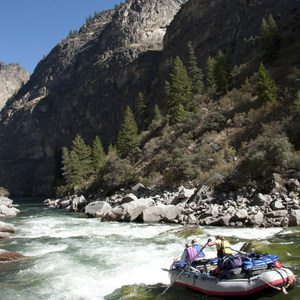
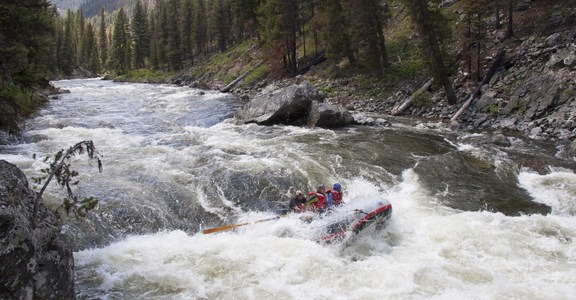
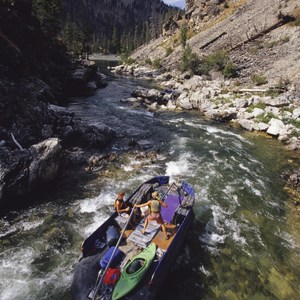
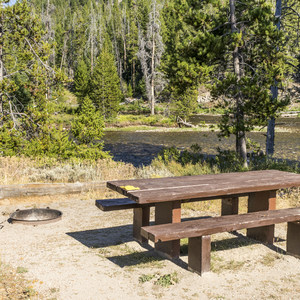
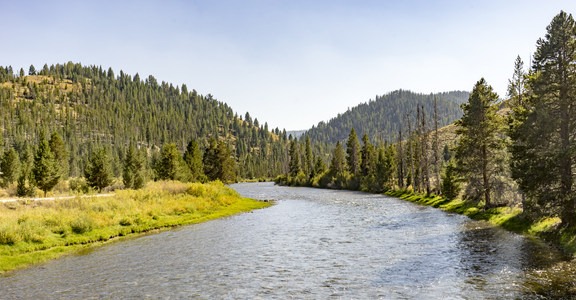
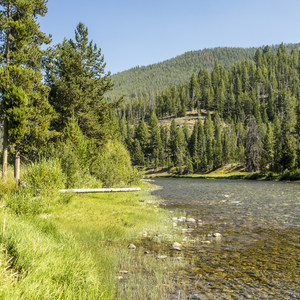

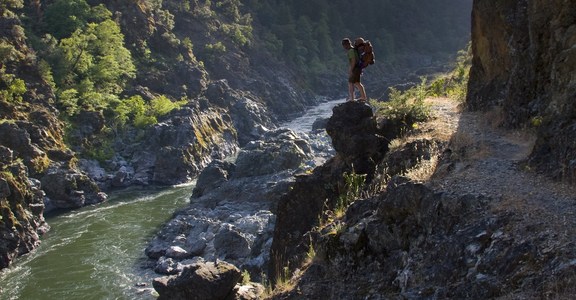
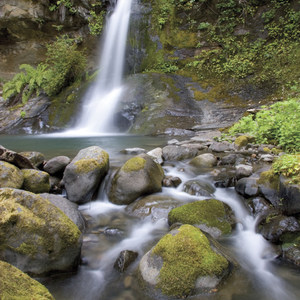
Comments
Sign In and share them.